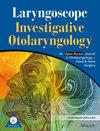Evaluation of the Effect of Platelet-Rich Plasma Injection After Recurrent Nerve Injury in Rats
Abstract
Introduction
Injuries to the recurrent laryngeal nerve (RLN) that may occur during thyroidectomy cause hoarseness, dysphagia, and dyspnea. Even if the injured nerve can be repaired surgically, it heals slowly and not completely. Platelet-rich plasma (PRP) is obtained by centrifuging blood taken from the human body. PRP accelerates the healing of the injured nerve due to the many growth factors it contains. The aim of this study is to investigate the therapeutic effectiveness of PRP and assess surgical repair after RLN injury.
Materials and Methods
Twenty-eight male Wistar albino rats were used in this study. We divided the rats into four groups, with seven animals in each group. Group 1: RLN was cut and primary repair was performed. Group 2: RLN was cut but not repaired. Group 3: RLN was cut, primary repair was performed, and PRP was injected. Group 4: RLN was cut, and PRP was injected without repair. Laryngoscopy and electromyography (EMG) were conducted before and after the procedure. For histopathological evaluation, parameters such as Schwann cell count, axon damage, and immunohistochemical staining intensity of Ki-67 cell proliferation marker were examined.
Results
The highest amplitudes in EMG were seen in Group 3 rats at the third- and sixth-week postoperatively (p < 0.05). Regarding histopathological evaluation, Schwann cell count, and Ki-67 immunohistochemical staining were primarily observed in Group 3 rats (p < 0.05). Axonal damage and cytoplasmic vacuolization were minimally detected in Group 3 rats (p < 0.05).
Conclusion
In our experimental rodent model, PRP injection increased the Schwann cell count and cell proliferation rate in the injured RLN area by promoting the healing of nerve axons.


 求助内容:
求助内容: 应助结果提醒方式:
应助结果提醒方式:


